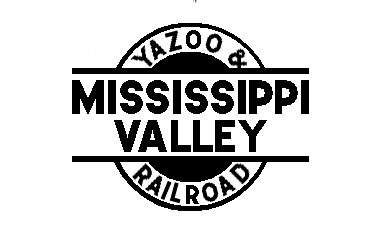Business Units
Many of the elements that make up the character of the T&GN/NT&O Proto-Freelanced railroads were inspired by observations and/or experiences I have gleaned from other model railroads or from the proto-type.
One particular prototype railroad, which shall remain anonymous in this discussion, has introduced me to the concept of business units. Essentially there are separate, semi-invisible railroads with unique agendas operating within a railroad. The primary differences are in the marketing, finance, and equipment distribution departments. The distinctions between the business units do roll-over into the operating department defining train priority and locomotive allocation.
The theory behind business units on the T&GN/NT&O is that different customer groups have different needs requiring different service plans, operating requirements, and equipment needs. The role of the Business Unit is to protect the interests of both the customer and the railroad. The Business Unit defines the impact that each customer will have on the overall railroad and works with the appropriate groups to ensure that the proper resources are allocated to provide the service level paid for by the customer. At the same time, the Business Units ensure that each customer contract is written taking into account the impact that the business will have on the overall railroad.
The T&GN/NT&O railroads have five Business Units catering to external shipper groups and one Business Unit for internal operating and accounting processes. These Business Units are:
1 - CLBU - Car Load Business Unit
2 - IBU - Intermodal Business Unit
3 - MBU - Manifest Business Unit
4 - ABU - Agriculture Business Unit
5 - CTBU - Cycle Train Business Unit
6 - RRB - RailRoad Business
The business unit concept was used to develop the numbering system for the T&GN/NT&O Railways. This will be discussed in more detail on the Locomotive Roster page. The simple premise is that blocks of numbers are assigned to specific business units.
The locomotives that are specifically allocated to meet the contractual service requirements of each business unit are assigned numbers in the appropriate number block or range.
Like on the real railroads, the primary purpose of this drill is to ensure that all of the proper resources are available and correctly expensed to meet service obligations. With the complexities of the operating world, units assigned to a specific business group can be used in a different class of service. For example, if three grain train locomotives are on-hand at a terminal and the power for a manifest train has failed, the operating decision can be made to put the grain train power on the manifest train if it is the right thing to do for the overall network.
Because of this, management decided to label each locomotive with the assigned business unit (located to the lower left of each long-hood road number) to heighten awareness in the field of where each locomotive is supposed to be if supply allows.
One particular prototype railroad, which shall remain anonymous in this discussion, has introduced me to the concept of business units. Essentially there are separate, semi-invisible railroads with unique agendas operating within a railroad. The primary differences are in the marketing, finance, and equipment distribution departments. The distinctions between the business units do roll-over into the operating department defining train priority and locomotive allocation.
The theory behind business units on the T&GN/NT&O is that different customer groups have different needs requiring different service plans, operating requirements, and equipment needs. The role of the Business Unit is to protect the interests of both the customer and the railroad. The Business Unit defines the impact that each customer will have on the overall railroad and works with the appropriate groups to ensure that the proper resources are allocated to provide the service level paid for by the customer. At the same time, the Business Units ensure that each customer contract is written taking into account the impact that the business will have on the overall railroad.
The T&GN/NT&O railroads have five Business Units catering to external shipper groups and one Business Unit for internal operating and accounting processes. These Business Units are:
1 - CLBU - Car Load Business Unit
2 - IBU - Intermodal Business Unit
3 - MBU - Manifest Business Unit
4 - ABU - Agriculture Business Unit
5 - CTBU - Cycle Train Business Unit
6 - RRB - RailRoad Business
The business unit concept was used to develop the numbering system for the T&GN/NT&O Railways. This will be discussed in more detail on the Locomotive Roster page. The simple premise is that blocks of numbers are assigned to specific business units.
The locomotives that are specifically allocated to meet the contractual service requirements of each business unit are assigned numbers in the appropriate number block or range.
Like on the real railroads, the primary purpose of this drill is to ensure that all of the proper resources are available and correctly expensed to meet service obligations. With the complexities of the operating world, units assigned to a specific business group can be used in a different class of service. For example, if three grain train locomotives are on-hand at a terminal and the power for a manifest train has failed, the operating decision can be made to put the grain train power on the manifest train if it is the right thing to do for the overall network.
Because of this, management decided to label each locomotive with the assigned business unit (located to the lower left of each long-hood road number) to heighten awareness in the field of where each locomotive is supposed to be if supply allows.



